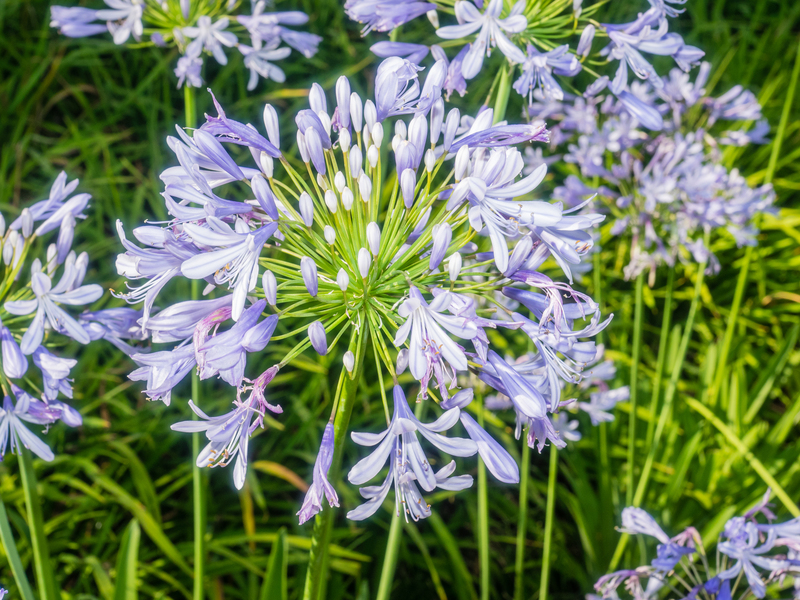Growing Green Solutions: Gardening for Climate Action
Posted on 10/06/2025
Growing Green Solutions: Gardening for Climate Action
Gardening has evolved far beyond a leisurely pastime or a way to beautify our surroundings. In the modern era, gardening for climate action offers a powerful opportunity for individuals and communities to combat climate change directly from their own backyards. By embracing green solutions through sustainable gardening techniques, everyone can contribute to a healthier, more resilient planet.
Why Gardening Matters in Climate Action
The connection between gardening and climate change mitigation might not be immediately obvious, but the benefits are both tangible and substantial. Gardeners have the unique ability to actively:
- Sequester carbon in soil and plants
- Enhance biodiversity for more resilient ecosystems
- Reduce the urban heat island effect
- Provide habitats for wildlife and pollinators
- Promote local food production, cutting food miles and emissions
- Implement water-saving techniques
Whether you have a small balcony, a suburban lot, or a community plot, you hold unique potential to enact practical gardening solutions for climate action.

Understanding Sustainable Gardening: The Foundations
At the heart of climate-friendly gardening lies the principle of working with nature, not against it. Sustainable gardening incorporates practices that help regenerate soil, conserve water, reduce pollution, and restore biodiversity. A climate-smart garden is resilient, thriving in extreme weather and contributing to both local and planetary wellbeing.
The Soil Solution: Carbon Sequestration
Healthy soil is a critical ally in the fight against climate change. Soil naturally stores carbon, but modern agriculture and land use have depleted its potential. You can reverse this through:
- Organic matter addition: Compost, mulches, and green manures boost soil carbon.
- Minimal tillage: Disturbing soil as little as possible preserves its structure and carbon stores.
- Diversification: Planting a variety of species, including cover crops and deep-rooted perennials.
By focusing on soil health, gardeners not only trap carbon dioxide but also build a foundation for robust plant growth and water retention.
Planting for a Cooler Planet
Your choice of plants has an outsized impact. Native species require less water and maintenance, while perennials store more carbon than shallow-rooted annuals. Consider these options for gardening for climate resilience:
- Native trees and shrubs offering shade and habitat
- Pollinator-friendly flowers
- Deep-rooted grasses and ground covers
- Edible food crops for local consumption
- Climate-adapted species for drought or flood resistance
The cumulative effect of well-chosen plants expands your garden's role as a carbon sink and biodiversity haven.
Practical Green Solutions: Climate-Smart Gardening Strategies
1. Composting: Closing the Loop
Composting is fundamental for sustainable gardening and climate mitigation at home. Organic waste sent to landfill decomposes anaerobically, producing methane--a potent greenhouse gas. Composting redirects this waste and creates nutrient-rich organic matter for your soil.
- Start small with a kitchen bin or pile.
- Mix green materials (food scraps, grass clippings) and brown materials (leaves, shredded paper).
- Use finished compost as top dressing--improving soil's capacity to support climate action gardening.
2. Water Wise Gardening
Climate change means more frequent droughts and unpredictable rainfall. Smart gardens use water efficiently:
- Mulching: Retain moisture and suppress weeds with organic matter.
- Rainwater harvesting: Capture runoff in barrels or swales.
- Drip irrigation: Minimize evaporation and target roots directly.
- Drought-tolerant plants: Select species naturally adapted to your local climate.
Water-conscious gardening not only conserves a precious resource but ensures your landscape stays resilient as the climate warms.
3. Reducing Synthetic Inputs
Synthetic fertilizers, pesticides, and herbicides are energy-intensive to produce and disrupt local ecologies. Organic garden solutions offer eco-friendly alternatives:
- Natural fertilizers: Compost, manure, and cover crops cycle nutrients without fossil fuels.
- Biological pest control: Encourage beneficial insects like ladybugs and predatory wasps.
- Physical barriers: Use row covers or netting to limit pests.
These methods foster a more balanced ecosystem and reduce the carbon footprint of your food or ornamental garden.
4. Saving Seeds and Supporting Genetic Diversity
Climate change threatens traditional crops and wild relatives. Saving seeds from your most resilient, healthy plants nurtures local adaptation over generations. Participate in swaps and support heirloom varieties to ensure food security for the future.
5. Urban Gardening and Community Green Spaces
For many, access to land is limited. Urban gardening--on rooftops, balconies, or in shared plots--brings climate action gardening to the heart of cities. Benefits extend beyond individual harvests:
- Community gardens store carbon and provide green lungs for urban environments.
- Shared green spaces foster education and collective climate action.
- Local food production reduces packaging and transport emissions.
The Biodiversity Bonus: Gardening for Wildlife and Pollinators
A critical dimension of gardening for climate solutions is creating supportive habitats for bees, butterflies, birds, and beneficial insects. These creatures underpin the resilience of both natural and cultivated landscapes, ensuring pollination and pest control.
- Plant diverse flowers: Stagger blooming times for year-round food.
- Leave some wild patches: Tall grasses, fallen logs, and leaf litter support nesting.
- Avoid pesticides: Chemicals can harm pollinators and disrupt ecological balance.
Gardens can thus form interconnected networks--helping wildlife move and adapt as the climate changes.
Reducing Food Miles: The Power of Homegrown Produce
Local food is more than a culinary delight--it's an effective tool for climate action. Growing your own fruits, vegetables, and herbs slashes the energy required for processing, packaging, and shipping food from afar.
- Vertical gardening or container gardening allows you to produce food even in small spaces.
- Succession planting maximizes harvests across the year.
- Preserving surplus through canning or freezing extends your reach into off-seasons.
This approach builds personal resilience and lowers your household's carbon footprint, all by tapping into green gardening solutions.
Educating & Inspiring: Gardening as Climate Advocacy
Your garden is more than a private refuge. It serves as a platform for influencing friends, neighbors, and the wider community. Sharing techniques, hosting events, and participating in local workshops multiplies your impact.
- Host garden tours: Demonstrate climate-smart techniques in action.
- Start a community compost: Share resources and knowledge for broader reach.
- Support school gardens: Instill eco-literacy in future generations.
Through collective efforts, even small urban and suburban gardens become powerful catalysts for climate action.
Climate Action Gardening: Looking to the Future
As the effects of climate change accelerate, gardeners are poised to play a vital role in global adaptation and mitigation efforts. Every flower planted, every compost pile built, and every drop of water saved can send ripples through the wider ecosystem and climate.
- Stay informed: Keep up with latest research on climate-resilient plants and practices.
- Experiment with new techniques: No-till, permaculture, agroecology--many approaches offer promise.
- Join movements: Engage with local, regional, and global networks focused on green, climate-smart gardening.
In embracing growing green solutions, gardening transforms from hobby to meaningful stewardship. Whether you're nurturing a window box or a multi-acre plot, gardening for climate action empowers everyone to make a measurable difference for people and planet.

Getting Started: Your Climate Action Gardening Checklist
- Assess your space: Observe sunlight, soil, and water runoff.
- Choose climate-appropriate plants: Favor natives, perennials, or drought-tolerant options.
- Create a compost system: Start diverting organics from landfill immediately.
- Mulch freely: Use local organic materials to retain moisture and suppress weeds.
- Reduce chemicals: Shift toward organic pest and disease management.
- Harvest rainwater: Even simple barrels can make a difference.
- Encourage biodiversity: Plant for pollinators and wildlife.
- Share your story: Inspire others through social media or community events.
The Green Future You Can Grow
Climate change challenges may seem daunting, but the solutions start at home, in our gardens and green spaces. By choosing to garden with the climate in mind, you join a global movement of gardeners for climate action--rebuilding soil, capturing carbon, feeding communities, and restoring life to our local ecosystems.
Let your garden be a place where hope takes root, where every leaf, flower, and fruit embodies a commitment to a greener, more resilient future--for yourself, and generations to come.



